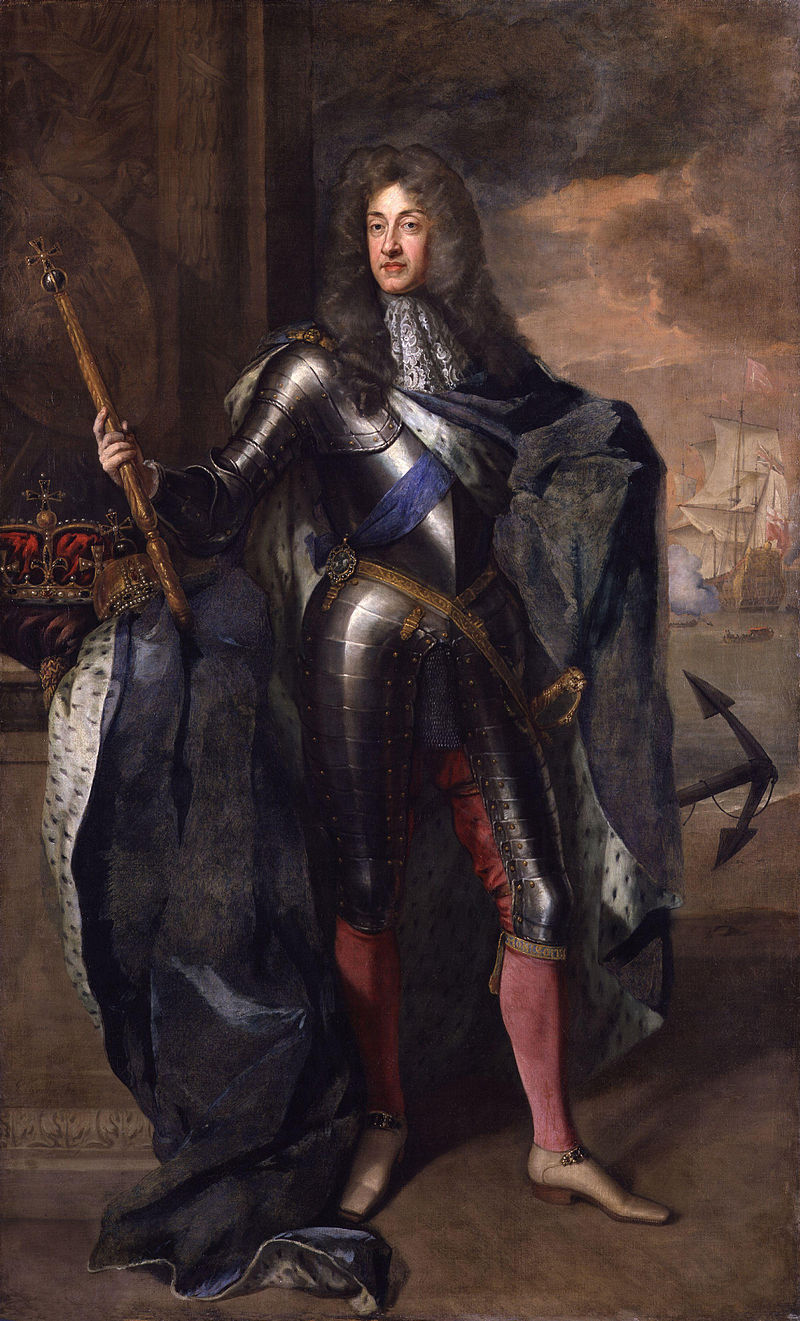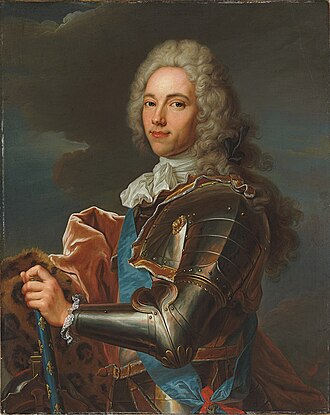POD: Elizabeth of York is born male.
Monarchs of England:
1442-1483: Edward IV (York)
1483-1503: Edward V "the Peacemaker" (York) [1]
1503-1548: Elizabeth I (York) [2]
1548-1555: Richard III (York-Gloucester) [3]
1555-1599: Edward V (York-Gloucester) [4]
1599-1610: Henry VII (de Anjou) [5]
Monarchs of England, France and Ireland:
1610-1641: Henry VII and II "the Blessed" (de Anjou) [5]
1641-1666: Fredrick I "the Fierce" (de Anjou) [6]
1666-1703: Charles X and I "the Sun King" (de Anjou) - Also Holy Roman Emperor from 1698 to 1703 as Charles VI.
[1] Charles, who at his peak was known as Carolus Rex, Rex Solis Nec Pluribus Impar, King of England, of France, of Ireland, Sovereign Lord of the Netherlands, the Rhine, Padania and Lombardy and Holy Roman Emperor, was born the eldest grandson of Frederick the I, by his own eldest son, Edward of Wales and the Dauphinate. Charles was born in La Rochelle, during his father's regency of France, staying under the care of his father and Portuguese mother in Paris rather than in London - something which caused plenty of friction with his grandfather, but lasted for most of his childhood. Despite this, Charles was not given a solely French education but a rather cosmopolitan one - Le Palais de Tuilleries, constructed by the Medici's, was the home of the Angevin royal family while in France, and in the late seventeenth century was home to a vast grouping of cultures, with men from the various Angevin Kingdoms and it's regions, alongside a vast collection of international thinkers, artists and preachers. A firm example of this is Charles famous linguistic ability - the Sun King knew how to speak over 10 languages - English, French, Latin, Greek, Italian, Provençal, Castillian, German, Dutch, Gaelic, Aramaic, Arabic and Portuguese before he hit twenty. Charles was the head of the "Angevin" generation - a generation of Franco-Angle men and women who had bridged the gap of the two Kingdoms and held ties to both, and a deep loyalty to the Angevin dinasty, who claimed heritage from both Capetians and Plantagenets.
His father would die in 1664, leaving a young Charles as his substitute for the French regency, which would itself not last. Charles X and I would become King of England and France in 1666, after the murder of his grandfather in Brittany. Charles would remain in France and be crowned in Reims, leading the vengeful expedition that would investigate and punish those who participated in the killing of his grandfather. The "War of the Fronde" would last from 1666 to 1669, culminating in the end of the autonomy of the Duchy of Brittany (John, Duke of Brittany, would be accused of plotting with the Bourbonites, angered at his brother for an apparent lack of rewards) and the nationalization of many noble lands, forever changing the history of the Kingdom of France itself. The smashing of the French parliaments and the nobility that held them up would see taxes on both the nobility and clergy put into law, the divine right of Kings established and the start of the Angevin absolute monarchy.

King-Emperor Charles VI at the Palais de Charlemagne in Aachen, post his coronation as Holy Roman Emperor.
Charles would finally move to England in 1670, with business in France calm. He did not intend to stay for long, though, as war with the Habsburgs loomed and Charles intented to strike across his destiny - unite Europe under the Angevin banner. Charles would initially enter conflict with parliament, but the King's rightful vengeance at King Frederick's murder had made him popular - and Brittany's treason made the public wary of challenges at the King's person - if even the Duke of Brittany, Frederick the I's right-arm in France for many years, could betray him, what stopped the fools in parliament? It was this wave of popular support that Charles rode to essentially both augment the importance of parliament but reduce it's power - making it subservient. Parliament was made as itinerary as the King was - and it would become a multi-national organ with representatives from England, France and Ireland. It would, however, become a mostly advisory council, with true powers in the hands of the King and his government. Nonetheless, the start of the Angevin golden age would start in England - with King's Charles taxation, colonial and naval reforms, making England the naval and colonial centre of the Angevin Empire, while France become the military and administrative center of it - with Ireland, isolated from continental Europe, meant to support both.
King Charles would marry Princess Catherine of Scotland in 1673, in York, in a grand ceremony. Grander still was the fact Catherine lacked any uncles or brothers - and thus was the heir of the Stuart line. Charles and Catherine would form a formidable couple that would go on to change the history of Europe forever. The couple would have seven children.
Charles is foremost remembered for his great victories in the "War of Luxembourg" (1677-78), the "Seven years war" (1683-90) and the "Savoyard War of Succession" (1696-97). The growing rivalry between Angevins and the Habsburgs would see the foundations of Europe shake as Charles decisively beat the Habsburg and allied powers three times - annexing the Spanish and Free Netherlands, the Holy Roman Empire west of the Rhine and many cities who straddled it, and most of Northern Italy, with Savoy, Liguria, Lombardy, Corsica and much of Padania falling under Angevin control and the Balearics and Catalonia in Iberia. A strong sense of "Gallicanism" and Romanism grew in Charles' lands during this time - Charles being God's chosen ruler on Earth and direct heir of Charlemagne and the Romans Emperors of Old. Charles would ride this tendency, bribing and initimidating his way to victory in the Imperial elections of 1698, becoming Holy Roman Emperor.
Other than his history of conquest, Charles left behind a vast cultural and economic legacy, but most fondly remembered are his palaces in Aachen, Koblenz, Strasbourg, Reims, Marseille, Bordeaux, Toulouse, Brest, Paris, Rouen, London, Birmingham, York, Dublin and Cardiff, where they were both his temporary homes while he travelled but also as the central images of a new age. North America, during Charles' time, become an exclusively Angevin zone - being colonized by Charles Irish, English, Welsh, French, Dutch, Italian and even German subjects.
Charles would die in Dublin in 1703, during a chill caught when visiting his farthest Kingdom. He left behind a strong state and a massive Empire, but many foreign enemies and tensions in Iberia, Germany and Italy. He was succeeeded by __________.
Monarchs of England:
1442-1483: Edward IV (York)
1483-1503: Edward V "the Peacemaker" (York) [1]
1503-1548: Elizabeth I (York) [2]
1548-1555: Richard III (York-Gloucester) [3]
1555-1599: Edward V (York-Gloucester) [4]
1599-1610: Henry VII (de Anjou) [5]
Monarchs of England, France and Ireland:
1610-1641: Henry VII and II "the Blessed" (de Anjou) [5]
1641-1666: Fredrick I "the Fierce" (de Anjou) [6]
1666-1703: Charles X and I "the Sun King" (de Anjou) - Also Holy Roman Emperor from 1698 to 1703 as Charles VI.
[1] Charles, who at his peak was known as Carolus Rex, Rex Solis Nec Pluribus Impar, King of England, of France, of Ireland, Sovereign Lord of the Netherlands, the Rhine, Padania and Lombardy and Holy Roman Emperor, was born the eldest grandson of Frederick the I, by his own eldest son, Edward of Wales and the Dauphinate. Charles was born in La Rochelle, during his father's regency of France, staying under the care of his father and Portuguese mother in Paris rather than in London - something which caused plenty of friction with his grandfather, but lasted for most of his childhood. Despite this, Charles was not given a solely French education but a rather cosmopolitan one - Le Palais de Tuilleries, constructed by the Medici's, was the home of the Angevin royal family while in France, and in the late seventeenth century was home to a vast grouping of cultures, with men from the various Angevin Kingdoms and it's regions, alongside a vast collection of international thinkers, artists and preachers. A firm example of this is Charles famous linguistic ability - the Sun King knew how to speak over 10 languages - English, French, Latin, Greek, Italian, Provençal, Castillian, German, Dutch, Gaelic, Aramaic, Arabic and Portuguese before he hit twenty. Charles was the head of the "Angevin" generation - a generation of Franco-Angle men and women who had bridged the gap of the two Kingdoms and held ties to both, and a deep loyalty to the Angevin dinasty, who claimed heritage from both Capetians and Plantagenets.
His father would die in 1664, leaving a young Charles as his substitute for the French regency, which would itself not last. Charles X and I would become King of England and France in 1666, after the murder of his grandfather in Brittany. Charles would remain in France and be crowned in Reims, leading the vengeful expedition that would investigate and punish those who participated in the killing of his grandfather. The "War of the Fronde" would last from 1666 to 1669, culminating in the end of the autonomy of the Duchy of Brittany (John, Duke of Brittany, would be accused of plotting with the Bourbonites, angered at his brother for an apparent lack of rewards) and the nationalization of many noble lands, forever changing the history of the Kingdom of France itself. The smashing of the French parliaments and the nobility that held them up would see taxes on both the nobility and clergy put into law, the divine right of Kings established and the start of the Angevin absolute monarchy.

King-Emperor Charles VI at the Palais de Charlemagne in Aachen, post his coronation as Holy Roman Emperor.
King Charles would marry Princess Catherine of Scotland in 1673, in York, in a grand ceremony. Grander still was the fact Catherine lacked any uncles or brothers - and thus was the heir of the Stuart line. Charles and Catherine would form a formidable couple that would go on to change the history of Europe forever. The couple would have seven children.
Charles is foremost remembered for his great victories in the "War of Luxembourg" (1677-78), the "Seven years war" (1683-90) and the "Savoyard War of Succession" (1696-97). The growing rivalry between Angevins and the Habsburgs would see the foundations of Europe shake as Charles decisively beat the Habsburg and allied powers three times - annexing the Spanish and Free Netherlands, the Holy Roman Empire west of the Rhine and many cities who straddled it, and most of Northern Italy, with Savoy, Liguria, Lombardy, Corsica and much of Padania falling under Angevin control and the Balearics and Catalonia in Iberia. A strong sense of "Gallicanism" and Romanism grew in Charles' lands during this time - Charles being God's chosen ruler on Earth and direct heir of Charlemagne and the Romans Emperors of Old. Charles would ride this tendency, bribing and initimidating his way to victory in the Imperial elections of 1698, becoming Holy Roman Emperor.
Other than his history of conquest, Charles left behind a vast cultural and economic legacy, but most fondly remembered are his palaces in Aachen, Koblenz, Strasbourg, Reims, Marseille, Bordeaux, Toulouse, Brest, Paris, Rouen, London, Birmingham, York, Dublin and Cardiff, where they were both his temporary homes while he travelled but also as the central images of a new age. North America, during Charles' time, become an exclusively Angevin zone - being colonized by Charles Irish, English, Welsh, French, Dutch, Italian and even German subjects.
Charles would die in Dublin in 1703, during a chill caught when visiting his farthest Kingdom. He left behind a strong state and a massive Empire, but many foreign enemies and tensions in Iberia, Germany and Italy. He was succeeeded by __________.

